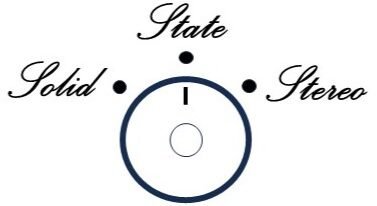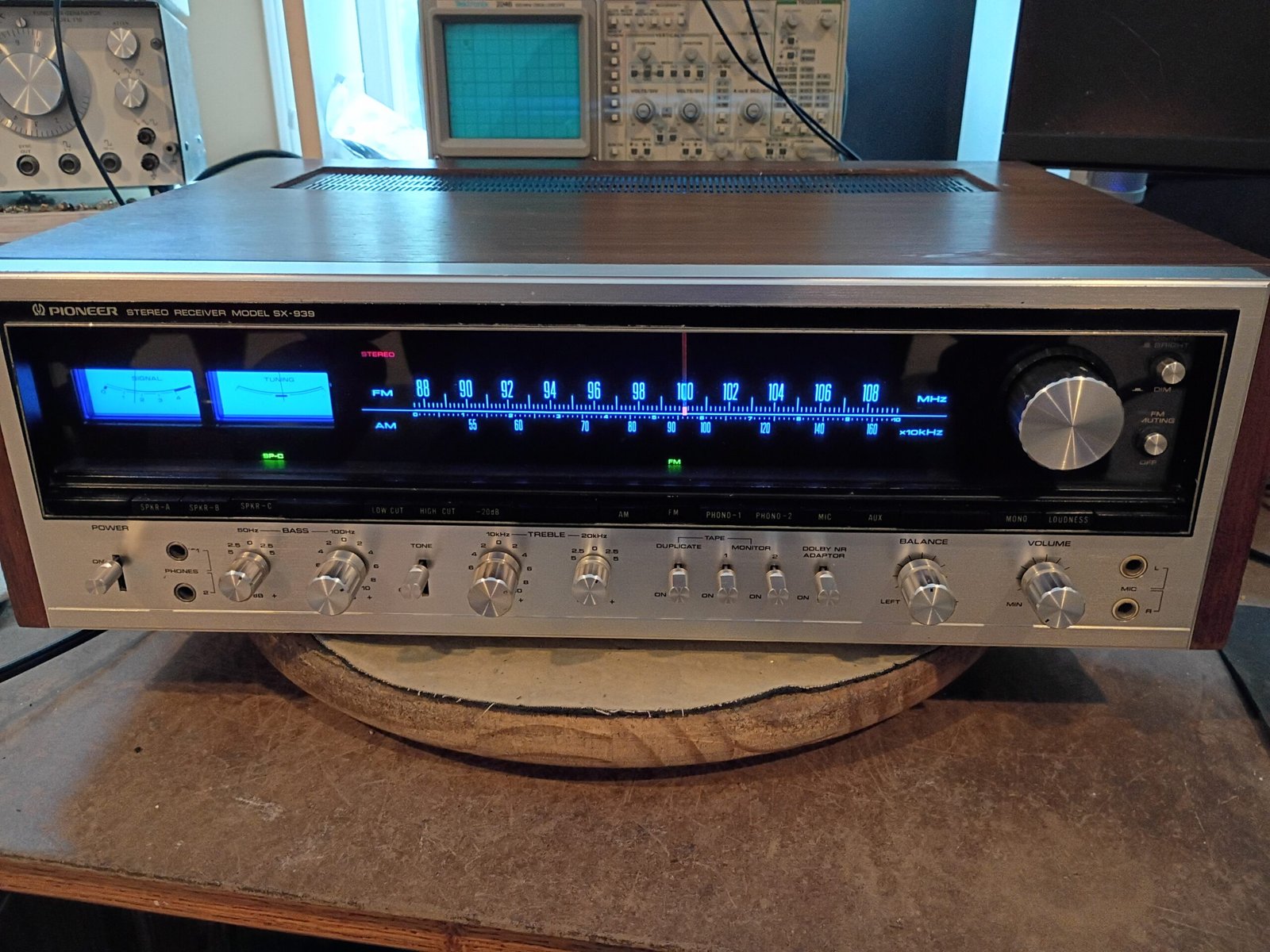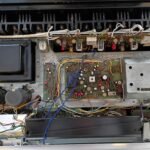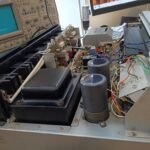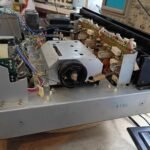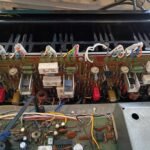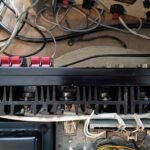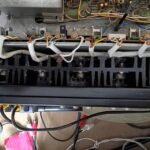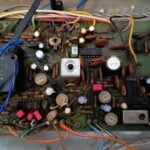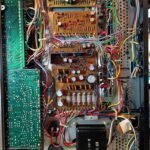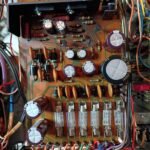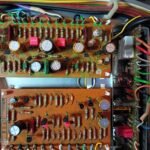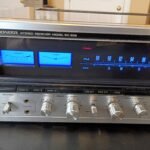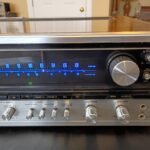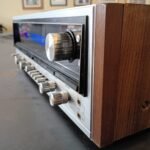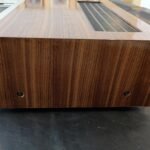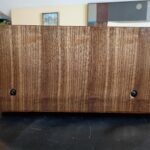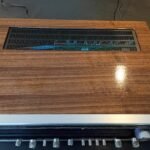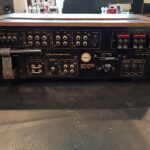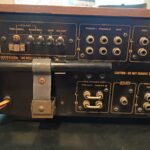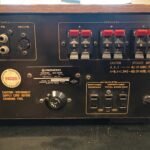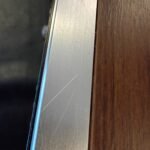Restoration notes
Beyond the list of standard restoration steps detailed on the main page, here are some added notes for this unit :
I purchased this receiver on eBay. The seller said “it just stopped working”. I rate the original cosmetics as “good”.
The Pioneer SX 939 came out in 1974 (2nd to the SX 1010). It is similar in size, internal layout and external appearance to the SX 1010. Internally, the main difference is the more powerful amplifier (70 watts per channel rating for the SX 939 vs 100 watts per channel for the SX 1010). Premium features include the 4 tone controls (50Hz, 100Hz for bass and 10,000Hz, 20,000Hz for treble) and the 2 levels of lamp brightness.
Initial inspection showed that the wood grain vinyl cladding Pioneer used had some large bubbles, so I removed it and applied a walnut veneer which was then stained/sealed.
The top of the faceplate had several light scratches that are apparent in the right lighting (example in photo above). The tuning knob shaft is very slightly bent such that the knob “wobbles” a tiny bit as it is spun. Pricing reflects these issues.
One notorious weakness in this receiver line in the placement/orientation of the power supply, Lower DC voltage supplies are derived using large pass transistors that get rather hot and the power supply board is mounted upside down under the chassis where there is little/no air flow. Over years of operation, the power supply boards often char and eventually fail as traces are broken, etc. I was relieved to see that this example only had modest discoloration so only a normal recap was needed.
Power up testing showed incorrect (high) idle currents which were easily corrected when set to spec. The protection relay then “clicked” on, but there was no audio until I cleaned all the pots and switches. I had to remove and disassemble the 5 toggle switches to properly clean the contacts.
This receiver has 9 lamps tied to the push button switches under the tuning dial and most of these were dead (as were most of the dial/meter lamps). LED lamps were installed across the board. The little lamps were originally placed in rectangular rubber bezels with 3 lamp positions in each assembly. The standard lamps Pioneer used ran hot and often deformed these rubber bezels (to the point of blocking the lamp). I assume this happened years ago when some “creative” tech decided to use caulking to form new bezels and then imbed the lamps before the caulking dried. I had to remove all that old caulking and then order correct replacement bezels to complete the re-lamping process.
There was a noise issue that a tracked down to a tiny spiral of metal that was somehow lodged across 2 diodes on the protection board.
The tuner is not as sensitive as I’d like, but sounds quite good on stations it can pull in strongly enough to light the “stereo” lamp.
Recap otherwise went smoothly.
Functional testing complete/passed. Sounds very nice, indeed.
Bench measurements
The Pioneer spec for this amplifier is 70 watts per channel (both channels driving 8 ohms) at a max distortion of 0.3% from 20 Hz to 20,000 Hz.
My bench test results under the same conditions was 79 watts per channel at 0.5% distortion (the lowest distortion level I feel confident in claiming with my test equipment).
I have no doubt the amplifier is performing at or above spec based on scope observations.
Some reference links
hifiengine : https://www.hifiengine.com/manual_library/pioneer/sx-939.shtml
Classic Receivers : https://classicreceivers.com/pioneer-sx-939
